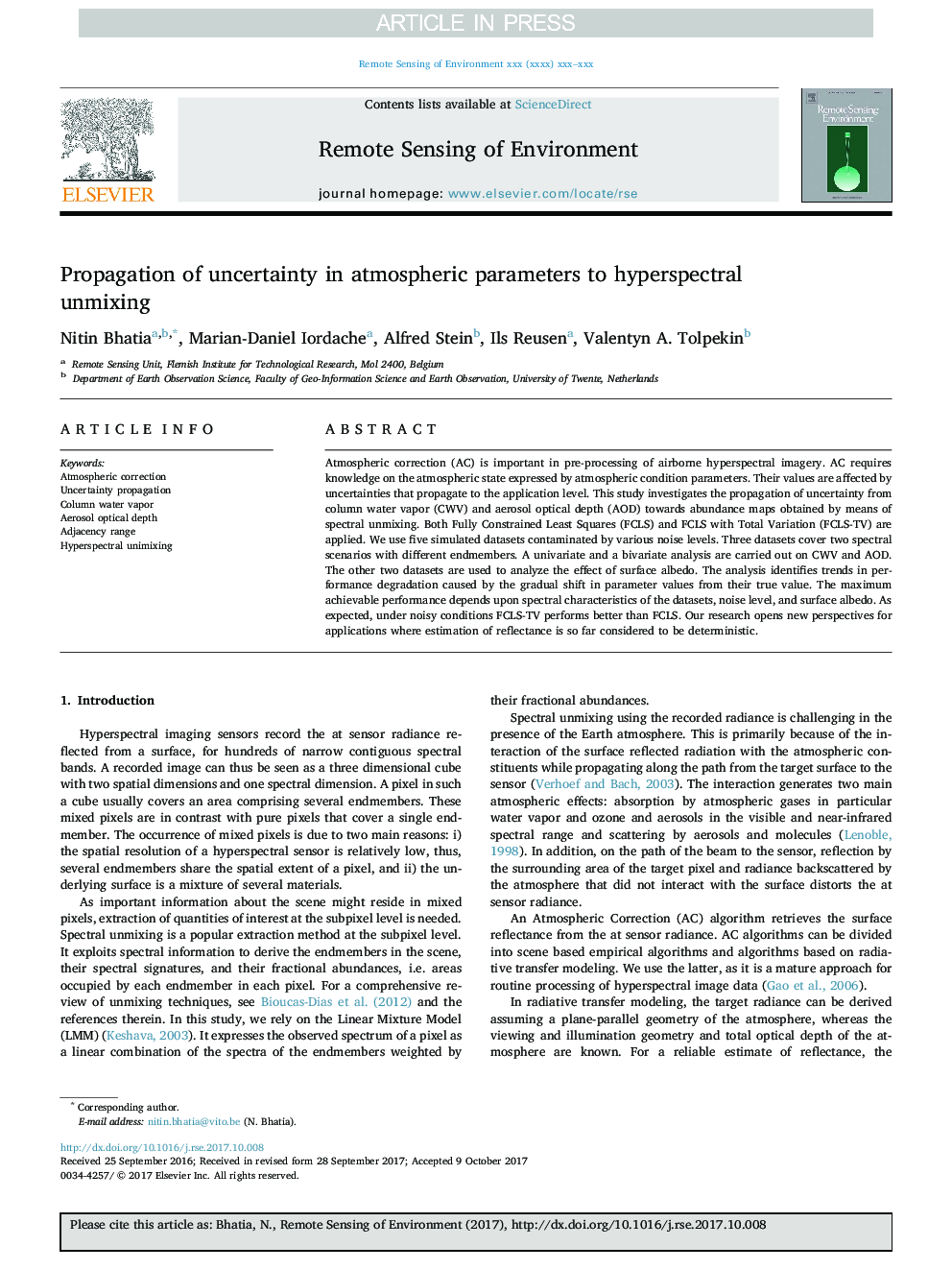| Article ID | Journal | Published Year | Pages | File Type |
|---|---|---|---|---|
| 8866868 | Remote Sensing of Environment | 2018 | 13 Pages |
Abstract
Atmospheric correction (AC) is important in pre-processing of airborne hyperspectral imagery. AC requires knowledge on the atmospheric state expressed by atmospheric condition parameters. Their values are affected by uncertainties that propagate to the application level. This study investigates the propagation of uncertainty from column water vapor (CWV) and aerosol optical depth (AOD) towards abundance maps obtained by means of spectral unmixing. Both Fully Constrained Least Squares (FCLS) and FCLS with Total Variation (FCLS-TV) are applied. We use five simulated datasets contaminated by various noise levels. Three datasets cover two spectral scenarios with different endmembers. A univariate and a bivariate analysis are carried out on CWV and AOD. The other two datasets are used to analyze the effect of surface albedo. The analysis identifies trends in performance degradation caused by the gradual shift in parameter values from their true value. The maximum achievable performance depends upon spectral characteristics of the datasets, noise level, and surface albedo. As expected, under noisy conditions FCLS-TV performs better than FCLS. Our research opens new perspectives for applications where estimation of reflectance is so far considered to be deterministic.
Related Topics
Physical Sciences and Engineering
Earth and Planetary Sciences
Computers in Earth Sciences
Authors
Nitin Bhatia, Marian-Daniel Iordache, Alfred Stein, Ils Reusen, Valentyn A. Tolpekin,
